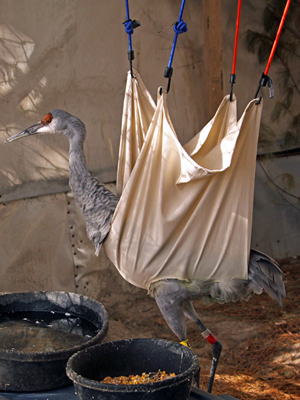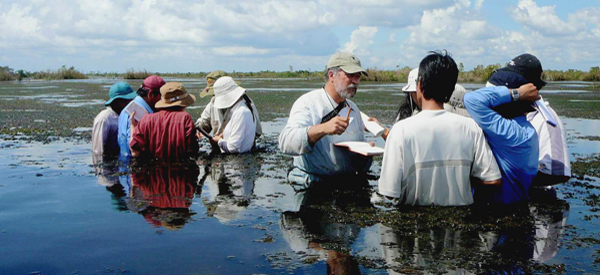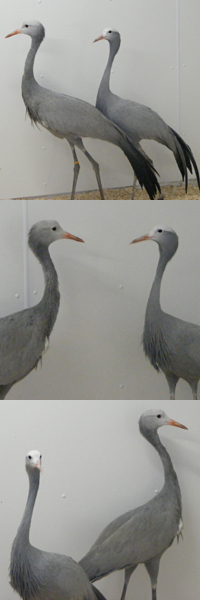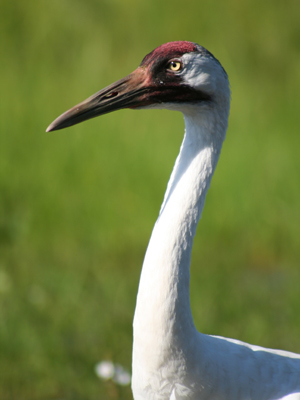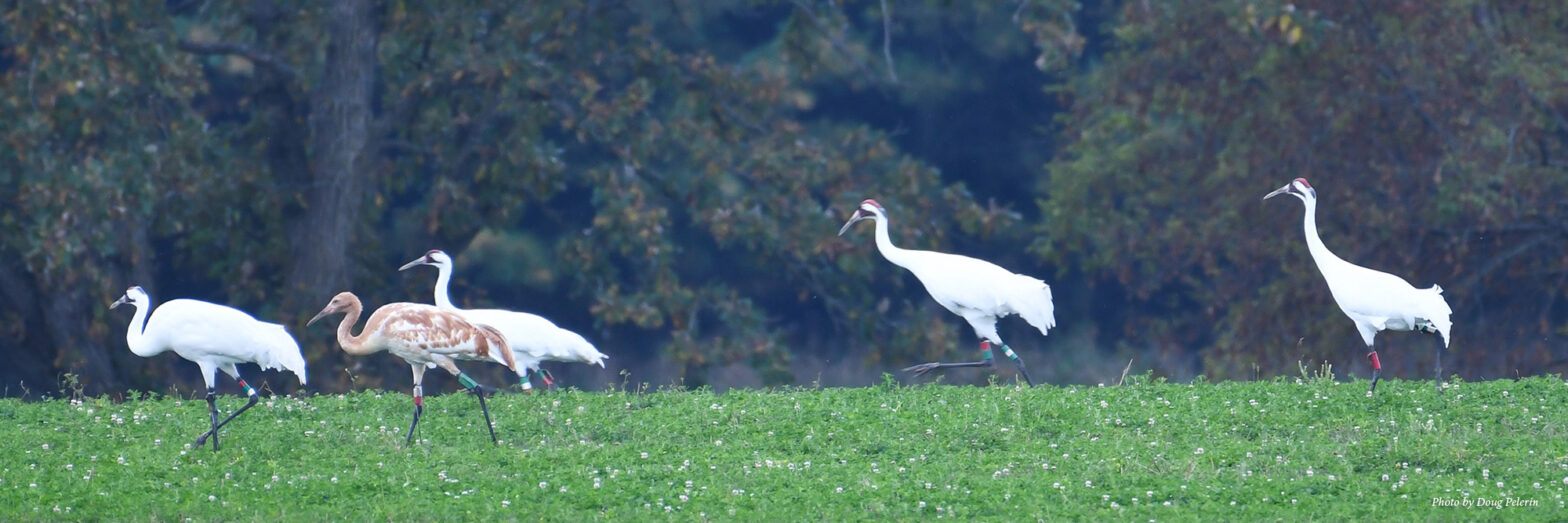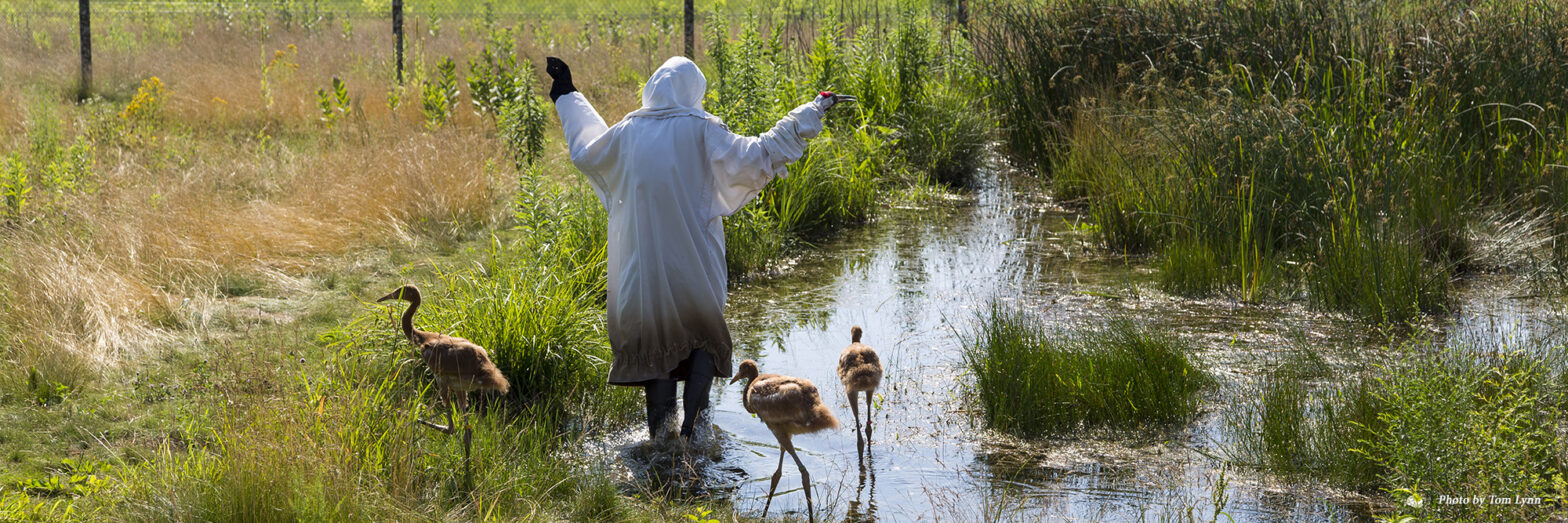 This has been a busy month for Whooping Crane activity since our last report. Aransas National Wildlife Refuge has received an additional 0.72 inches of precipitation and salinity levels remain higher than ideal. We have continued to help alleviate the low food resources by adding to our prescribed burn totals. This week alone we have burned an additional 4,682 acres of Whooping Crane habitat. Biologists observed the Whooping Cranes eating roasted acorns and are seeing continued usage.
This has been a busy month for Whooping Crane activity since our last report. Aransas National Wildlife Refuge has received an additional 0.72 inches of precipitation and salinity levels remain higher than ideal. We have continued to help alleviate the low food resources by adding to our prescribed burn totals. This week alone we have burned an additional 4,682 acres of Whooping Crane habitat. Biologists observed the Whooping Cranes eating roasted acorns and are seeing continued usage.
Results for "💓 Icrosoft homework help< ❇😂 www.ESSAYforCASH.com 📪 ↩. Choose Pro Writer✞💤🖤: get help with homework, , free homework help online chat, do my homework assignment, does homework help students learn"
A Helping Hand
 At ICF’s Baraboo headquarters, we have all 15 species of crane, many for purposes of breeding and maintaining the valuable genetic lines of several endangered species. That responsibility, however, precludes us from taking in any injured cranes, either from public reports or as a result of our research. Wild birds have the potential of bringing with them any number of diseases that could wreak havoc with our captive population; that is a risk we cannot take.
At ICF’s Baraboo headquarters, we have all 15 species of crane, many for purposes of breeding and maintaining the valuable genetic lines of several endangered species. That responsibility, however, precludes us from taking in any injured cranes, either from public reports or as a result of our research. Wild birds have the potential of bringing with them any number of diseases that could wreak havoc with our captive population; that is a risk we cannot take.
ICF Partners with U.S. State Dept to Study Pollutants in Mekong
 ICF has worked in the Mekong River Basin since 1988, coordinating community projects, long-term wetland restoration activities, and training for a new generation of wetland managers. Working with eight founding institutions, ICF created the University Network of Southeast Asia in 2001 to establish a training program in wetland ecology and management for students and professionals in the Mekong Basin. Over the past ten years, this network has grown to include 18 member universities and has trained over 200 students in wetland management. Many are now leaders in universities and conservation organizations working within the region.
ICF has worked in the Mekong River Basin since 1988, coordinating community projects, long-term wetland restoration activities, and training for a new generation of wetland managers. Working with eight founding institutions, ICF created the University Network of Southeast Asia in 2001 to establish a training program in wetland ecology and management for students and professionals in the Mekong Basin. Over the past ten years, this network has grown to include 18 member universities and has trained over 200 students in wetland management. Many are now leaders in universities and conservation organizations working within the region.
New Blue Crane Joins ICF Flock
 On November 16, 2011, ICF received a young male Blue Crane from the National Zoological Park (NZP). The young crane, named Kito (Swahili for ‘precious child’) by ICF staff, was hatched in May 2011 and was parent–reared at NZP. Kito was donated to ICF to be paired with our female Blue Crane, Veld. Veld lost her previous mate in 2009 and, as many visitors to ICF since then may know, hasn’t been comfortable spending much time on exhibit.
On November 16, 2011, ICF received a young male Blue Crane from the National Zoological Park (NZP). The young crane, named Kito (Swahili for ‘precious child’) by ICF staff, was hatched in May 2011 and was parent–reared at NZP. Kito was donated to ICF to be paired with our female Blue Crane, Veld. Veld lost her previous mate in 2009 and, as many visitors to ICF since then may know, hasn’t been comfortable spending much time on exhibit.
Wildlife Agency Urges Crane Spectators to Maintain Distance
 As a pair of Whooping Cranes remains in North Carolina’s Clay County, the U.S. Fish & Wildlife Service urges spectators to maintain their distance in order to not spook the cranes and reduce their familiarity with humans.
As a pair of Whooping Cranes remains in North Carolina’s Clay County, the U.S. Fish & Wildlife Service urges spectators to maintain their distance in order to not spook the cranes and reduce their familiarity with humans.
“These cranes are among the rarest animals on the planet. In our efforts to recover this species, I can’t stress enough how important it is for people to give the birds the space they need to feel comfortable and go peacefully about their daily lives of finding food, water, shelter, and developing the bond that will lead to successful nesting in the spring,” said Bill Brooks, a biologist with the U.S. Fish & Wildlife Service.
Whooping Crane Shot in Indiana
 The International Crane Foundation (ICF) is saddened to learn of the shooting of male Whooping Crane #6-05 from the eastern migratory population. Number 6-05 was found dead on December 30 near Crothersville, Indiana. He was paired with DAR (Direct Autumn Release) Whooping Crane #37-09. Number 6-05 is the eighth Whooping Crane to be senselessly shot in the past year (two were shot in the non-migratory population in Louisiana and six in the eastern migratory population).
The International Crane Foundation (ICF) is saddened to learn of the shooting of male Whooping Crane #6-05 from the eastern migratory population. Number 6-05 was found dead on December 30 near Crothersville, Indiana. He was paired with DAR (Direct Autumn Release) Whooping Crane #37-09. Number 6-05 is the eighth Whooping Crane to be senselessly shot in the past year (two were shot in the non-migratory population in Louisiana and six in the eastern migratory population).
Dr. Rich Beilfuss, President & CEO
Dr. Rich Beilfuss has served as the International Crane Foundation’s President & CEO and ex officio member of the Board of Directors since 2010. He helped launch many of the Foundation’s signature projects and provides oversight, vision and prioritization to… Continue reading Dr. Rich Beilfuss, President & CEO
North America
Issue The once threatened Sandhill Crane has made an inspiring comeback throughout much of its range. However, despite this success, the species continues to be threatened by power line collisions… Continue reading North America
Raising Cranes
What does it take to raise a crane in captivity? Experienced and dedicated staff, healthy cranes and time. When any species is first brought into captivity, it takes trial and… Continue reading Raising Cranes
Activity Packets
We are excited to offer activity packets for ages preschool through high school, along with select activities in Spanish, for use in your classroom! Please contact us for more information at 608-356-9462,… Continue reading Activity Packets


